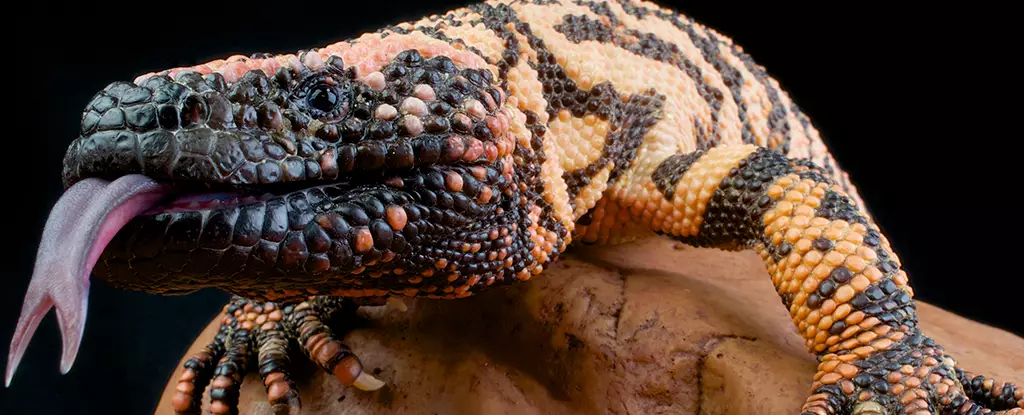The natural world is filled with an astonishing array of creatures, each equipped with unique biochemical tools—many of which have evolved for survival. In a surprising twist, some of these potent venoms have become the building blocks for groundbreaking medical treatments, illuminating the path towards innovative therapies. Far from being merely dangerous, including elements derived from animal venoms in medical research exemplifies nature’s untapped potential to address pressing health challenges faced by humanity today.
The Gila Monster and GLP-1 Agonists
One of the most compelling stories in this realm begins with the Gila monster (Heloderma suspectum). While the lizard’s venom has the potential to be fatal, its biochemical composition holds the key to a powerful medical innovation: glucagon-like peptide-1 (GLP-1) agonists, such as Ozempic and Wegovy. In the 1990s, endocrinologist Daniel Drucker led a pioneering effort, motivated by the idea of identifying a GLP-1 counterpart that would remain stable in the human body, thereby enabling improved appetite regulation and blood sugar control for individuals with type 2 diabetes.
Through meticulous research, Drucker and his team examined the proteins found in Gila monster venom, uncovering a protein named Exendin-4. This unique protein not only resembles human GLP-1 but also exhibits superior durability within the body, thus enhancing its pharmacological potential. As a result of these efforts, Exendin-4 was synthesized and eventually approved by the FDA in 2005, marking a significant milestone in diabetes treatment. Moreover, the versatility of these GLP-1 agonists has opened new avenues for obesity treatments as well.
From Vipers to Blood Pressure Medications
The application of venomous substances extends beyond the Gila monster, with the Brazilian viper (Bothrops jararaca) also making a crucial contribution to medicine. The development of Lisinopril, a widely prescribed medication for conditions like hypertension and heart failure, can be traced back to the natural inhibitors found in the viper’s venom. These enzymes, originally intended to facilitate the spread of venom within prey, have been repurposed to assist in managing human cardiovascular health.
Lisinopril acts by obstructing the action of specific chemicals that constrict blood vessels, effectively lowering blood pressure and alleviating strain on the heart. By utilizing the mechanisms refined through millions of years of evolution, researchers have successfully transformed a lethal asset into a lifeline for numerous patients around the globe.
While examining venomous creatures showcases one avenue of medical advancement, it is crucial to highlight other remarkable biochemicals derived from seemingly innocuous organisms. The Caribbean sea sponge (Tectitethya crypta) produces nucleosides that defend it from foreign DNA attacks. This particular defense mechanism inspired the creation of cytarabine, a chemotherapy drug included on the WHO’s List of Essential Medicines, renowned for its role in treating non-Hodgkin’s lymphoma and certain types of leukemia.
This transmutation of biological defense into human treatment underscores the vital interplay between nature and medicine. By harnessing these innovative molecules, researchers are unraveling novel therapies that continue to save lives while simultaneously showcasing the importance of biodiversity in therapeutic development.
One of the most intriguing developments stemming from venom research involves the utilization of chlorotoxin derived from the deathstalker scorpion (Leiurus quinquestriatus). When faced with the challenge of identifying cancerous cells during surgery, oncologist Jim Olson embarked on a quest to find a solution that would render tumors more visible to surgeons.
By isolating chlorotoxin and incorporating it into a lab-engineered compound, Olson and his team produced Tozuleristide. This innovative peptide binds selectively to brain tumor cells, allowing medical professionals to visualize cancerous tissues under near-infrared light. As a result, surgeons can differentiate between malignant and healthy cells with unprecedented precision, greatly increasing the effectiveness of surgical interventions.
The lessons learned from these extraordinary medical advancements speak to both the ingenuity of nature and human perseverance. Each story—from the Gila monster’s venom to the secrets hidden within sea sponges and scorpions—serves as a reminder of the untapped potential residing within our planet’s diverse ecosystems. By continuing to investigate these complex biochemical interactions, we can unlock new therapies capable of addressing the most challenging health crises facing humanity. However, this exploration also carries a critical message of conservation; it is essential to protect the habitats of these unique organisms to ensure that the next transformative treatment is not lost before it can be discovered. Nature remains our greatest ally in the quest for effective medicine.

